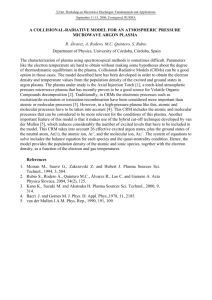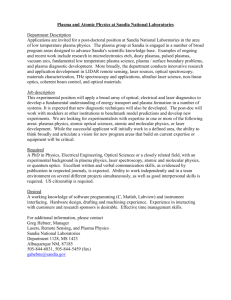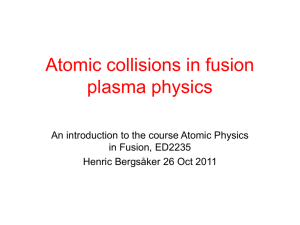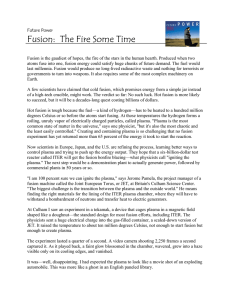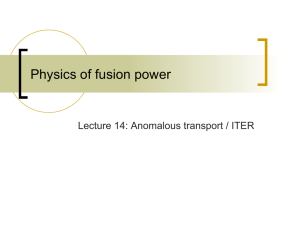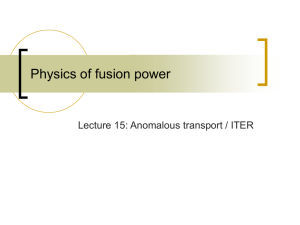Determination of absolute erosion yields and S/XB values via Cavity
advertisement
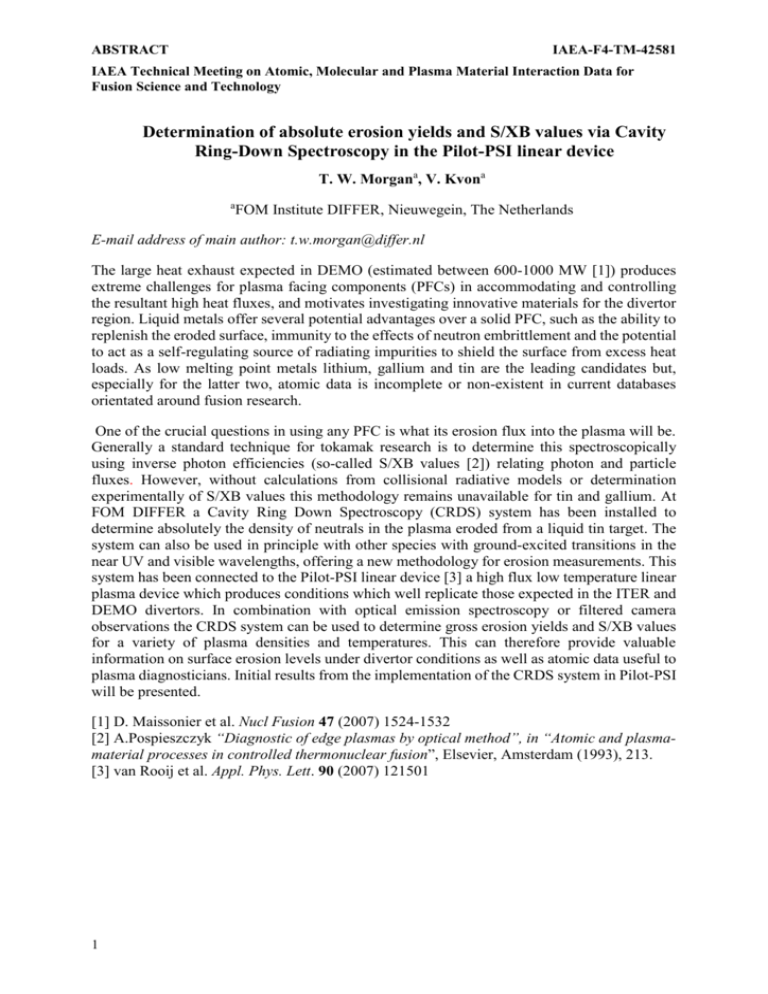
ABSTRACT IAEA-F4-TM-42581 IAEA Technical Meeting on Atomic, Molecular and Plasma Material Interaction Data for Fusion Science and Technology Determination of absolute erosion yields and S/XB values via Cavity Ring-Down Spectroscopy in the Pilot-PSI linear device T. W. Morgana, V. Kvona a FOM Institute DIFFER, Nieuwegein, The Netherlands E-mail address of main author: t.w.morgan@differ.nl The large heat exhaust expected in DEMO (estimated between 600-1000 MW [1]) produces extreme challenges for plasma facing components (PFCs) in accommodating and controlling the resultant high heat fluxes, and motivates investigating innovative materials for the divertor region. Liquid metals offer several potential advantages over a solid PFC, such as the ability to replenish the eroded surface, immunity to the effects of neutron embrittlement and the potential to act as a self-regulating source of radiating impurities to shield the surface from excess heat loads. As low melting point metals lithium, gallium and tin are the leading candidates but, especially for the latter two, atomic data is incomplete or non-existent in current databases orientated around fusion research. One of the crucial questions in using any PFC is what its erosion flux into the plasma will be. Generally a standard technique for tokamak research is to determine this spectroscopically using inverse photon efficiencies (so-called S/XB values [2]) relating photon and particle fluxes. However, without calculations from collisional radiative models or determination experimentally of S/XB values this methodology remains unavailable for tin and gallium. At FOM DIFFER a Cavity Ring Down Spectroscopy (CRDS) system has been installed to determine absolutely the density of neutrals in the plasma eroded from a liquid tin target. The system can also be used in principle with other species with ground-excited transitions in the near UV and visible wavelengths, offering a new methodology for erosion measurements. This system has been connected to the Pilot-PSI linear device [3] a high flux low temperature linear plasma device which produces conditions which well replicate those expected in the ITER and DEMO divertors. In combination with optical emission spectroscopy or filtered camera observations the CRDS system can be used to determine gross erosion yields and S/XB values for a variety of plasma densities and temperatures. This can therefore provide valuable information on surface erosion levels under divertor conditions as well as atomic data useful to plasma diagnosticians. Initial results from the implementation of the CRDS system in Pilot-PSI will be presented. [1] D. Maissonier et al. Nucl Fusion 47 (2007) 1524-1532 [2] A.Pospieszczyk “Diagnostic of edge plasmas by optical method”, in “Atomic and plasmamaterial processes in controlled thermonuclear fusion”, Elsevier, Amsterdam (1993), 213. [3] van Rooij et al. Appl. Phys. Lett. 90 (2007) 121501 1

